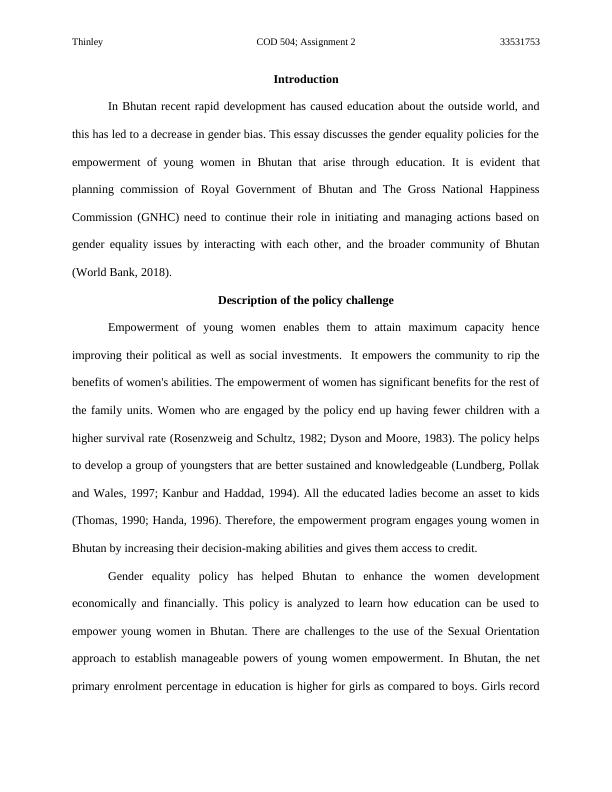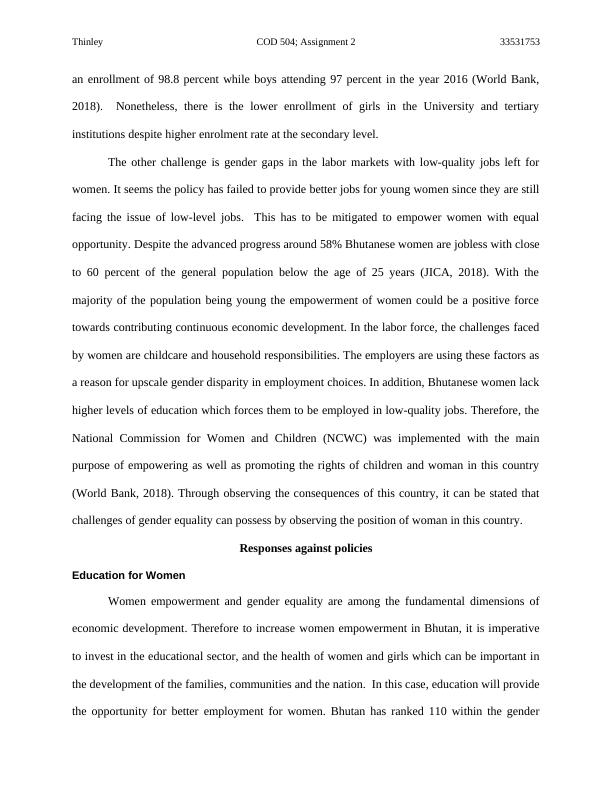The Shift from Good Intentions to Actual Policy for Educating Girls in Bhutan
This essay discusses the gender equality policies for the empowerment of young women in Bhutan that arise through education.
9 Pages2448 Words42 Views
Added on 2023-03-23
About This Document
This essay discusses the gender equality policies for the empowerment of young women in Bhutan that arise through education. It explores the challenges and responses against these policies, as well as the context of policy changes and the process of advocating changes. The essay emphasizes the importance of investing in education for the empowerment of women in Bhutan.
The Shift from Good Intentions to Actual Policy for Educating Girls in Bhutan
This essay discusses the gender equality policies for the empowerment of young women in Bhutan that arise through education.
Added on 2023-03-23
ShareRelated Documents
End of preview
Want to access all the pages? Upload your documents or become a member.



